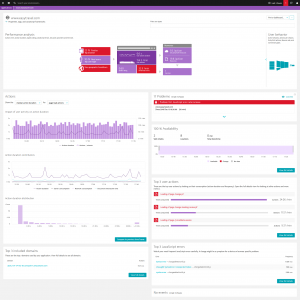I have seen many companies struggle to find out what issues may be driving customer complaints when they come in to a support or service center, and today’s digital multi-channel strategies do not make it easier. With customer complaints, the following question always surfaces: Is the complaint because of a technical issues or is it something else? To get visibility into technical issues many companies have tried web session recording and replay tools. But these solutions lack the ability to capture all customer visits due to numerous reasons, including overhead on the application. With these tools, capturing the online journey of a specific customer with a complaint is usually pure luck.
They are also unable to cover all the digital channels that a company uses, including mobile apps, store kiosks, airline self-service check-in counters, and more. To obtain better insight, companies have also integrated feedback loops into their apps, but are not always successful with them. And, in addition to having everything in a separate tool, the best way to determine how to work together with the IT team — who must solve the issue — is usually left open!
Isn’t there an easier way to gain insight into customer journeys, no matter which digital channel a user comes through? From my experience, in order to get customer complaint resolution “done right” in today’s multi-channel environment, you must have the following:
- Chance to quickly find and see the user journeys
- See quickly if there were technical issues occurring during the session
- The user navigation path, the errors occurring alongside this path, and the resulting performance degradation
- Having the technical details available to developers and operators to make them actionable
Here is what I found to be most useful – Real User Monitoring across the digital channels, with technical depth as well as the non-technical view on individual users, for support and marketing audiences to understand why users are complaining. Luckily, I can work with great people together and we solved the issue! The screenshots below give you concise insight on what is possible today with Real User Monitoring when working to solve customer complaints.
Step 1: Identify the user who is in need!
Identifying users via user tags, location, app usage or other indicators needs to be simple and easy-to-use for everyone in the company. Having the result available quickly, particularly if the complaining user is still interacting with your application, can be crucial to determining if you’ll be able to win back the customer or lose them, possibly forever.

Step 2: Learn about his journeys across your channels!
It is not only critical to identify the user but to also see each session they had on different applications, different devices, and also from different locations. Determining session length and the number of interactions occurring during this time, are all key to developing a clear understanding of the user frustration and pinpointing the customer complaint session.

Step 3: See where they failed on their way to conversion!
As seen in the below example, not being able to use the datepicker when trying to book a journey is quite a challenge. Trying it manually without the date picker (which does the date formatting for the user) can be a big challenge when considering all the date formats used around the world. The example shows how a simple JavaScript Error can stop your customer from moving forward on the conversion path, and lead to a complaint.

Step 4: Collaborate with IT using context information to fix the issue!
We frequently write about technical issues bringing down applications/channels. The example below shows how a third-party JavaScript caused a big impact, not only on the single complaining user but also on the entire site causing more than 100 errors per minute!



Conclusion
Today, people are using more channels than ever to communicate with you, but are you ready to react appropriately when something goes wrong? The digital changes in the past have not stopped the evolution of monitoring solutions. They have — for better or worse — pushed them to become more capable. Not too long ago IT started with Application Performance Management (APM), but today it is not only about actionable insight for IT, it is about applying user-centric data to assist entire companies in effectively growing the business.
Welcome to the World of Digital Performance Management! Want to get started? Check out this!



Looking for answers?
Start a new discussion or ask for help in our Q&A forum.
Go to forum